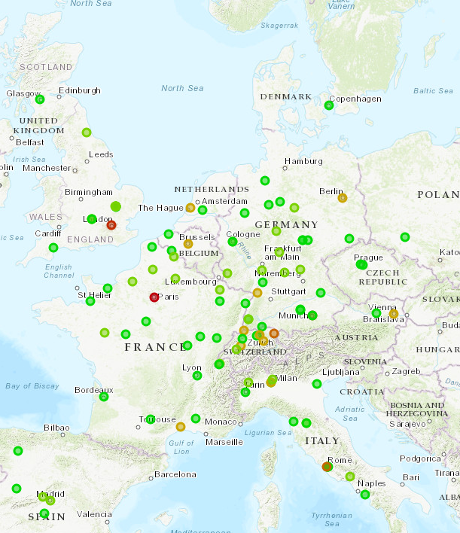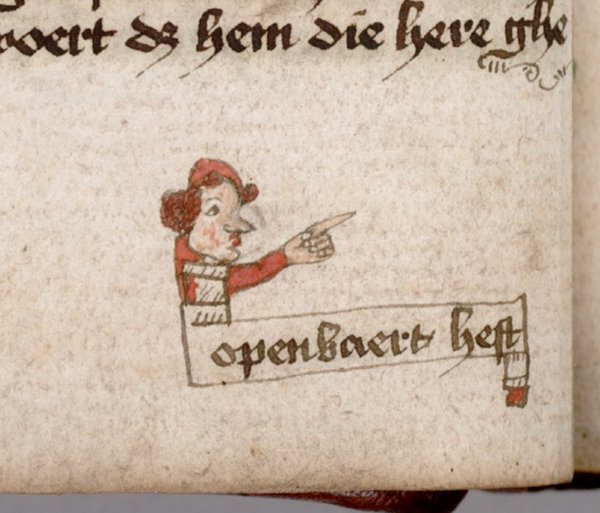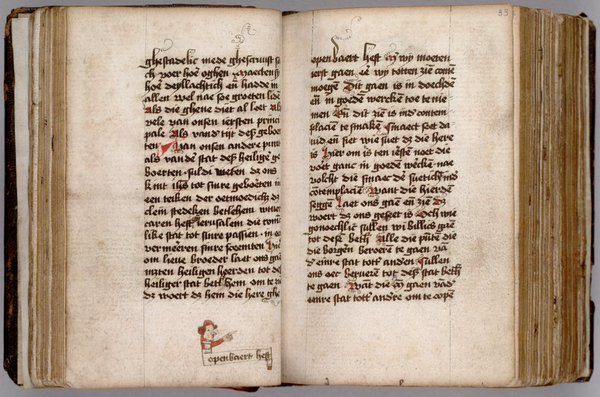The third phase of the British Library's Greek Manuscripts Digitisation Project is now well underway. So far, the following items, all Greek biblical items, have been added to Digitised Manuscripts. We will continue to update the blog with new additions over the course of the year, and will also look at some individual manuscripts in more detail in later posts. We are extremely grateful to the foundations and individuals who have funded this project, especially the Stavros Niarchos Foundation, the A. G. Leventis Foundation, Sam Fogg, the Sylvia Ioannou Foundation and the Thriplow Charitable Trust.
Add MS 24112, Four Gospels in Greek (Gregory-Aland 694; Scrivener evan. 598; von Soden ε 502), written throughout with space for a Latin translation, which has been added for a small number of verses. 15th century, possibly Italy.
Add MS 24373, Four Gospels (Gregory-Aland 695; Scrivener evan. 599; von Soden ε 327), with illuminated Evangelist portraits. 13th century. Also online is an old 19th-century binding for this manuscript.
Add MS 24374, Fragments from a Gospel Lectionary with ekphonetic notation (Gregory-Aland l 325; Scrivener evst. 273). 13th century.
Add MS 24376, Four Gospels (Gregory-Aland 696; Scrivener evan. 600; von Soden ε 328), with illuminated Evangelist portraits (St Mark illustrated above). 14th century (illuminations added in the 16th century), Constantinople.
Add MS 24377, Gospel Lectionary (Gregory-Aland l 326; Scrivener evst. 274), with ekphonetic notation, imperfect. 2nd half of the 12th century, possibly from the Monastery of Patir in southern Italy.
Add MS 24378, Menaion for September, October, November, December, January and February (Gregory-Aland l 927; Scrivener evst. 275). 13th/14th century.
Add MS 24379, Gospel Lectionary (Gregory-Aland l 327; Scrivener evst. 276), imperfect. 14th century.
Add MS 24380, Gospel Lectionary (Gregory-Aland l 328; Scrivener evst. 277), with ekphonetic notation, imperfect. 14th century.
Add MS 27860, Gospel Lectionary (Gregory-Aland l 329; Scrivener evst. 278), imperfect at the beginning, with marginal decorations thruoghout. Late 10th/early 11th century, Southern Italy (possibly Capua). Also online is an old 17th-century binding for this manuscript.
Add MS 27861, Gospels (Gregory-Aland e 698; Scrivener evan 602; von Soden ε 436), imperfect (lacking Matthew). 14th century.
Add MS 28815, New Testament, imperfect (Gregory-Aland 699; Scrivener evst. 603; von Soden δ 104), with Evangelist portraits and a silver-gilt plated cover. Mid-10th century, Constantinople. The subject of a recent blog post along with Egerton 3145.
Add MS 28816, New Testament, from Acts onwards (Gregory-Aland 203; Scrivener act. 232; von Soden α 203), with Euthalian apparatus, and other works. Written between 1108 and 1111 by the monk Andreas in March 1111, in the cell of the monk Meletius in the monastery of the Saviour.
Add MS 28818, Gospel Lectionary (Gregory-Aland l 331; Scrivener evst. 280). 1272, written by the monk Metaxares.
Add MS 29713, Gospel Lectionary (Gregory-Aland l 332; Scrivener evst. 62), imperfect at the beginning. 14th century.
Add MS 31208, Gospel Lectionary with ekphonetic notation (Gregory-Aland l 333; Scrivener evst *281), imperfect. 13th century, possibly Constantinople.
Add MS 31920, Gospel Lectionary (Gregory-Aland l 335; Scrivener evst 283), imperfect and mutilated. 12th century, South Italy (possibly Reggio).
Add MS 32051, Lectionary of the Acts and Epistles, imperfect, with ekphonetic notation (Gregory-Aland l 169; Scrivener apost. 52). 13th century.
Add MS 32341, Four Gospels (Gregory-Aland 494; Scrivener evan. 325; von Soden ε 437), imperfect. 14th century.
Add MS 33214, New Testament: Acts and Epistles (Gregory-Aland 1765; von Soden α 486). 14th century.
Add MS 33277, Four Gospels (Gregory-Aland 892; von Soden ε 1016; Scrivener evan. 892). 9th century, with replacement leaves added in the 13th and 16th centuries.
Add MS 34108, Four Gospels (Gregory-Aland 1280; Scrivener evan. 322; von Soden ε 1319). 12th century, with some replacement leaves added in the 15th century.
Add MS 34602, Fragments from two Psalters (Rahlfs-Fraenkel 2017, 1217) (illustrated above). 7th century and 10th century, Egypt.
Add MS 36751, Gospel Lectionary with ekphonetic neumes, called ἐκλογάδι(ον) (Gregory-Aland l 1491). Completed in 1008 at the Holy Monastery of Iviron, Mount Athos, by the scribe Theophanes.
Add MS 36752, Four Gospels (Gregory-Aland 2280). 12th century.
Add MS 37005, Gospel Lectionary (Gregory-Aland l 1493). 11th century.
Add MS 37006, Gospel Lectionary with ekphonetic neumes (Gregory-Aland l 1494 [=l 460]). 12th century, with late 13th-century replacements, including a full-page miniature of Christ and a figure identified as Andronicus II Palaeologus (Byzantine emperor 1282-1328) (illustrated above).
Add MS 38538, New Testament, Acts and Epistles (Gregory-Aland 2484), with Euthalian apparatus. Written by the scribe John in 1312
Add MS 39589, Psalter (Rahlfs 1092) with introduction and commentary based on that of Euthymius Zigabenus (PG 128), attributed in the manuscript to Nicephorus Blemmydes, imperfect, with ornamental headpieces and the remains of a miniature of the Psalmist. 2nd half of the 12th century.
Add MS 39590, New Testament, without the book of Revelation (Gregory-Aland 547; Scrivener evan. 534; von Soden δ 157). 11th century.
Add MS 39593, Four Gospels (Gregory-Aland 550; Scrivener evan. 537; von Soden ε 250), with prefaces taken from the commentary of Theophylact, and synaxaria. 12th century.
Add MS 39612, Revelation (Gregory-Aland 2041; Scrivener apoc. 96; von Soden α1475). The quire-numbers on ff 1v and 10v show the manuscript formed part of a larger volume, possibly Athos, Karakallou 121 (268) (Gregory-Aland 1040). 14th century, possibly Mount Athos.
Add MS 39623, Fragments from a Gospel Lectionary (Gregory-Aland l 1742). Late 14th century, possibly Mount Athos.
Egerton MS 3145, Epistles and Revelation (Gregory-Aland 699; Scrivener paul. 266; von Soden δ 104), concluding portion of the manuscript of the entire New Testament of which Add. MS 28815 is the earlier portion. Mid-10th century, Constantinople. Also online is an old (18th century?) binding for this manuscript.
I know a number of scholars who will be happy to learn of this latest batch of NT manuscripts. (I am awaiting similar projects with 3-D imaging of cuneiform.)
Cillian O’Hogan is fortunate to work at an institution that fosters scholarship, biblical and otherwise.





